To master drone safety as a photographer, you'll need to navigate several key areas. First, register your drone with the FAA if it weighs between 0.55 and 55 pounds. Familiarize yourself with airspace restrictions and no-fly zones using apps like B4UFLY. Always maintain visual line of sight with your drone during flight. Consider weather conditions carefully, avoiding strong winds and precipitation. Respect privacy by obtaining permission before photographing private property or individuals. By following these guidelines, you'll guarantee your aerial shots are both stunning and legal. Dive deeper to uncover more essential tips for safe and compliant drone photography.
Key Takeaways
- Register your drone with the FAA and display the registration number on your aircraft.
- Use the B4UFLY app to check for airspace restrictions and no-fly zones before each flight.
- Maintain visual line of sight with your drone at all times during operation.
- Consider weather conditions, avoiding strong winds and precipitation that could compromise flight safety.
- Respect privacy laws and obtain permission when photographing private property or individuals.
Understanding Drone Registration Requirements
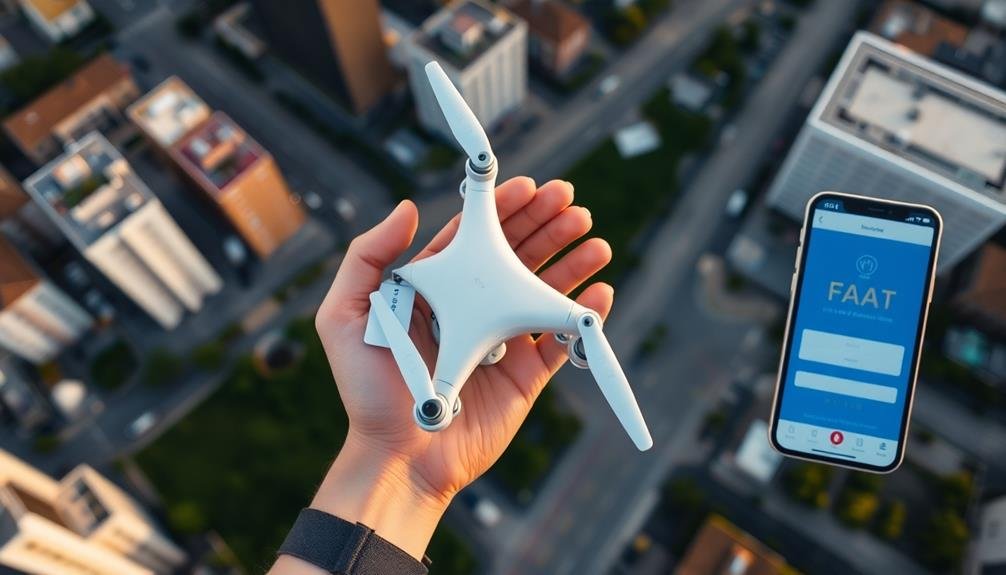
When it comes to drone registration, knowing the rules is essential. In the United States, the Federal Aviation Administration (FAA) requires most drones to be registered before flight.
If your drone weighs between 0.55 and 55 pounds, you'll need to register it. The process is straightforward: visit the FAA's DroneZone website, create an account, and pay a small fee.
You'll receive a registration number that must be displayed on your drone. This number is valid for three years and applies to all the drones you own.
If you're flying for recreational purposes, you'll register under the "Exception for Recreational Flyers" category. For commercial use, register under the "Part 107" category.
Airspace Restrictions and No-Fly Zones
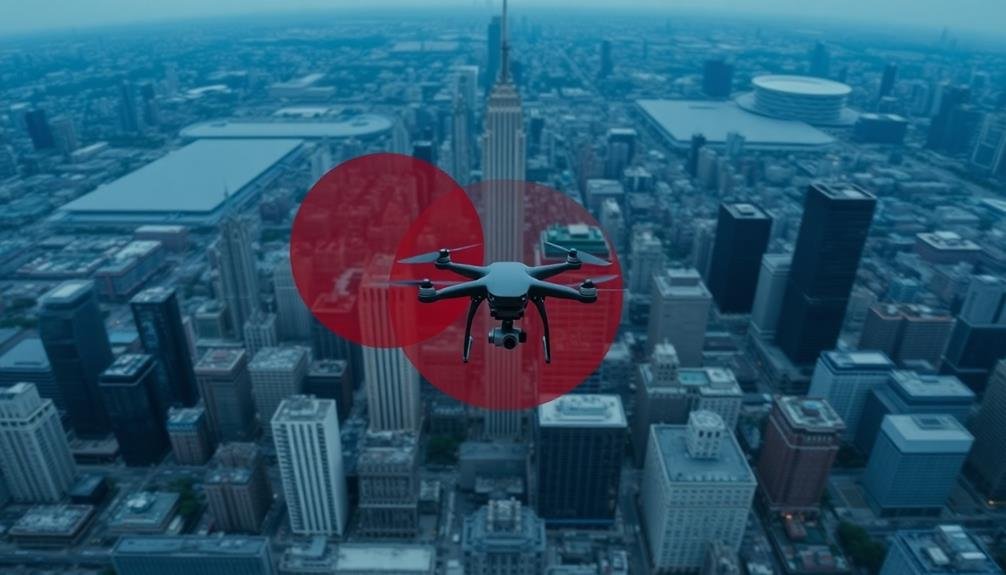
Although flying drones can be exhilarating, it is crucial to understand airspace restrictions and no-fly zones before taking off. The Federal Aviation Administration (FAA) has established guidelines to guarantee safety and protect sensitive areas. You'll need to familiarize yourself with controlled airspace, which includes areas around airports, military bases, and other restricted locations.
Use the B4UFLY app or FAA's website to check for no-fly zones in your area. These zones often include national parks, stadiums during events, and areas with temporary flight restrictions. Always respect these boundaries to avoid legal consequences and potential safety hazards.
| Airspace Class | Max Altitude | Authorization Required? |
|---|---|---|
| Class G | 400 feet | No |
| Class B, C, D | 400 feet | Yes |
| Class E | Varies | Sometimes |
Maintaining Visual Line of Sight
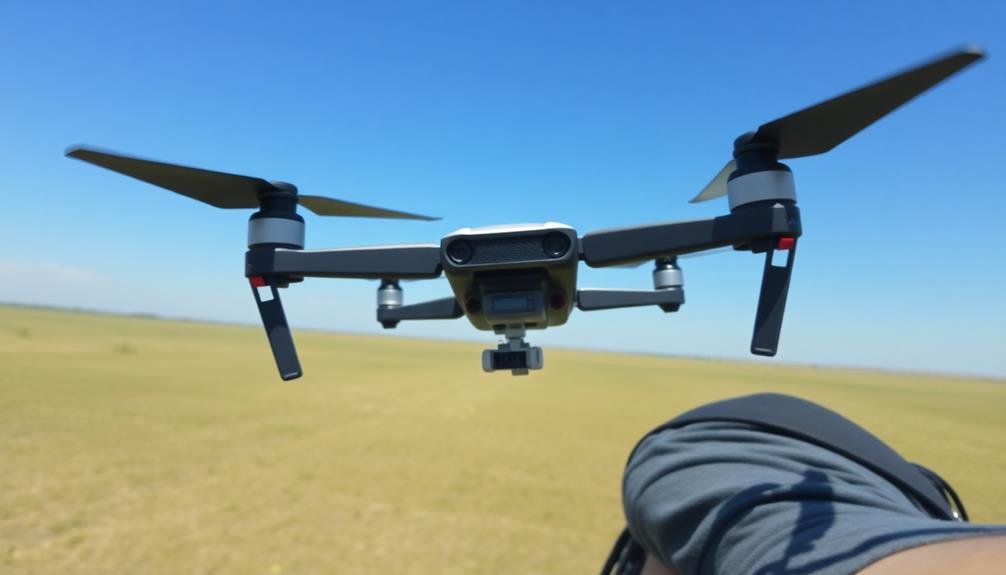
Visual line of sight is a fundamental rule in drone operation. As a drone pilot, you're required to maintain direct visual contact with your aircraft at all times during flight. This means you must be able to see your drone without the aid of any device other than corrective lenses.
You can't rely solely on your drone's camera feed or first-person view (FPV) goggles to navigate.
Maintaining visual line of sight helps you avoid obstacles, monitor your drone's position, and react quickly to potential hazards. It's essential for safe operation and complying with regulations.
To guarantee you're always in visual contact:
- Choose open flying areas with clear sightlines
- Keep your drone within a reasonable distance
- Be aware of weather conditions that may affect visibility
- Use a spotter if necessary, especially in complex environments
Weather Considerations for Drone Flights
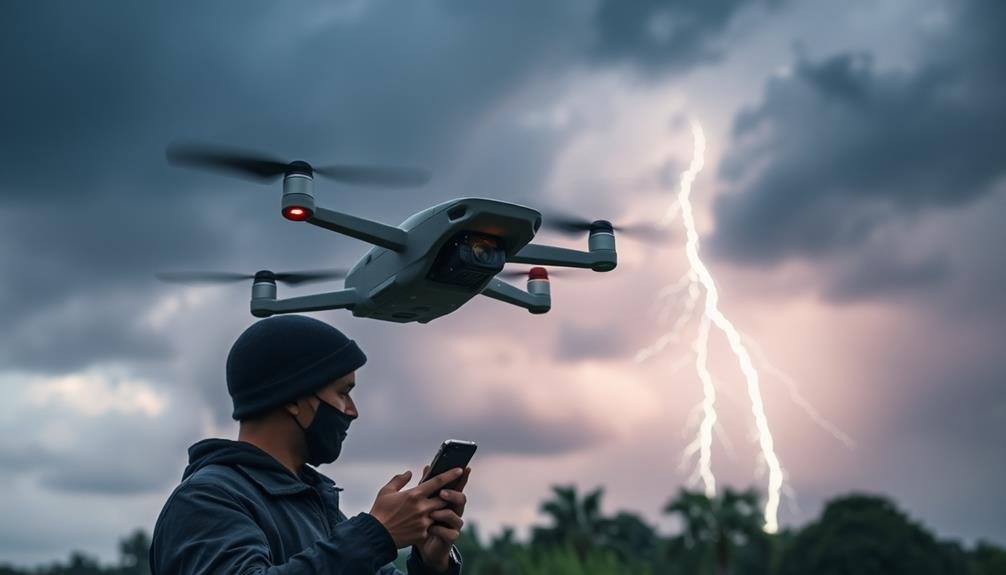
Weather conditions play an essential role in drone flight safety. Before launching your drone, always check the forecast and current conditions. Wind is a primary concern; strong gusts can overpower your drone's motors, causing loss of control. Generally, avoid flying in winds exceeding 20 mph.
Temperature affects battery performance; extreme cold can drastically reduce flight time, while excessive heat may cause overheating.
Precipitation is another vital factor. Rain, snow, and fog can damage your drone's electronics and impair visibility. Even light rain can interfere with sensors and camera lenses. Humidity can also cause condensation inside the drone, potentially leading to short circuits.
Be aware of sudden weather changes. Thunderstorms pose significant risks due to lightning strikes and unpredictable wind patterns. Solar flares and geomagnetic storms can disrupt GPS signals, affecting your drone's navigation capabilities.
Time of day matters too. Flying during twilight hours can be challenging due to reduced visibility and potential glare from the sun. If you must fly in less-than-ideal conditions, adjust your flight plan accordingly, maintain a lower altitude, and be prepared to land quickly if needed.
Respecting Privacy During Aerial Photography
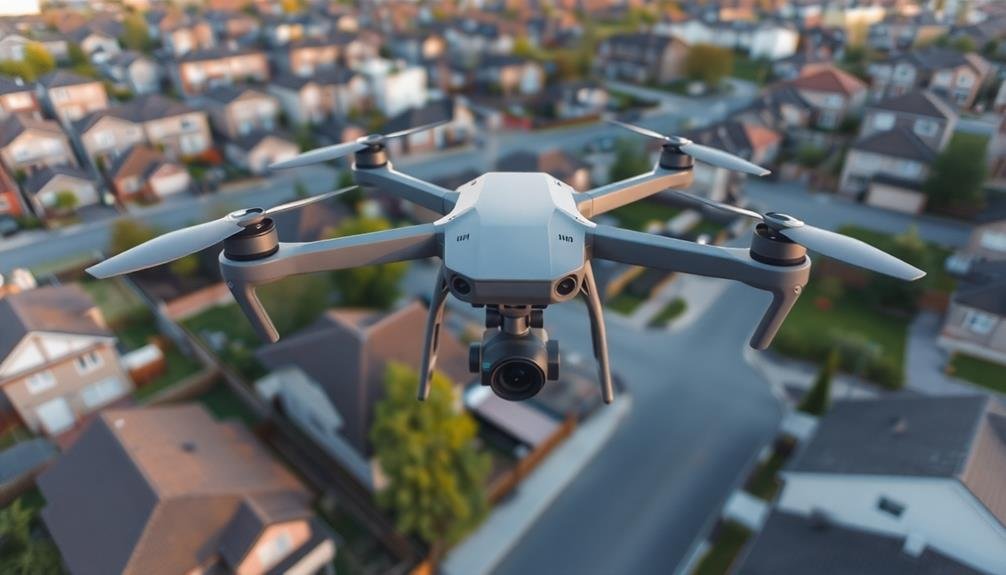
As drone technology advances, the responsibility to respect others' privacy becomes increasingly important. When flying your drone for aerial photography, you must be mindful of people's personal space and property.
Always obtain permission before capturing images of private residences or individuals in their yards. Avoid flying over backyards, swimming pools, or areas where people have a reasonable expectation of privacy.
Be aware of local laws regarding drone photography, as some jurisdictions have stricter regulations than others. Don't use your drone to peer into windows or capture images of people without their consent.
If you're shooting in public spaces, be considerate of individuals who may not want to be photographed. Consider the potential impact of your footage on others. Even if it's legal to capture certain images, ask yourself if it's ethical.
Respect "no-fly zones" and restricted areas, which often include government buildings, airports, and sensitive infrastructure. When sharing your aerial photographs, be cautious about revealing identifiable information about people or private property.
Frequently Asked Questions
How Do I Choose the Right Drone for Aerial Photography?
You'll want to contemplate your photography needs, budget, and skill level. Look for drones with high-quality cameras, stable flight performance, and good battery life. Don't forget to check payload capacity if you're using external cameras.
What Insurance Options Are Available for Drone Operators?
You've got several insurance options as a drone operator. You can get liability coverage, hull insurance for your drone, and personal injury protection. Some providers offer specialized drone insurance packages. Don't forget to check your existing policies too.
How Can I Improve My Drone Piloting Skills?
You can enhance your drone piloting skills by practicing regularly, using simulators, taking online courses, and joining local drone clubs. Don't forget to study flight manuals, watch tutorial videos, and stay updated on the latest techniques.
Are There Specific Certifications for Commercial Drone Photography?
Yes, there are specific certifications for commercial drone photography. You'll need to obtain a Part 107 Remote Pilot Certificate from the FAA. It involves passing a knowledge test and meeting other requirements like age and background checks.
What Are the Best Practices for Storing and Transporting Drones?
You'll want to store your drone in a padded case to protect it. When transporting, remove batteries and secure propellers. Keep it in a cool, dry place. Don't forget to clean your drone after each use.
In Summary
You've learned the essentials of safe and legal drone photography. Remember, it's your responsibility to stay informed and follow the rules. Always register your drone, check airspace restrictions, keep it in sight, and monitor weather conditions. Don't forget to respect others' privacy when capturing aerial shots. By adhering to these guidelines, you'll not only protect yourself and others but also elevate the reputation of drone photographers everywhere. Fly safely and capture stunning images!

As educators and advocates for responsible drone use, we’re committed to sharing our knowledge and expertise with aspiring aerial photographers.



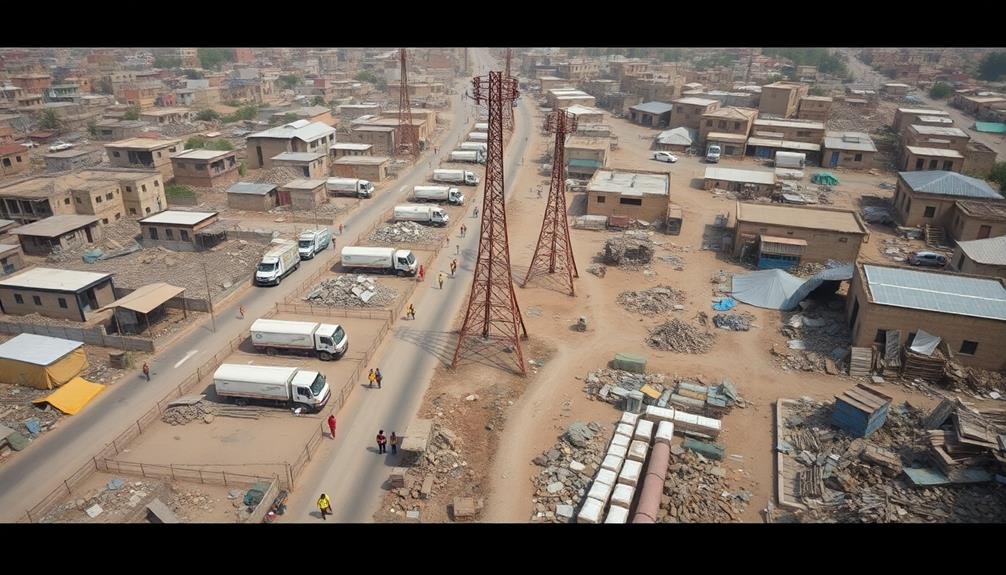
Leave a Reply